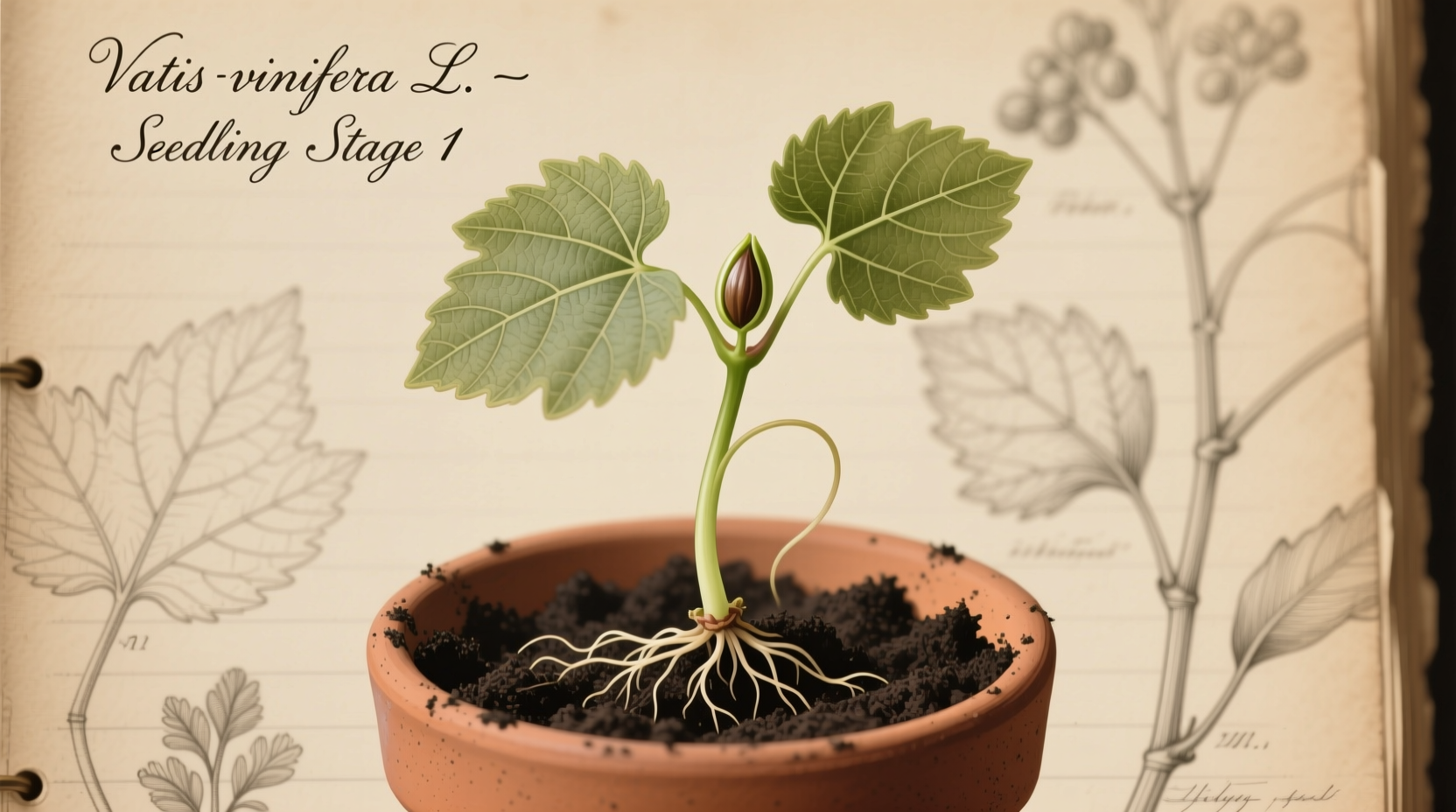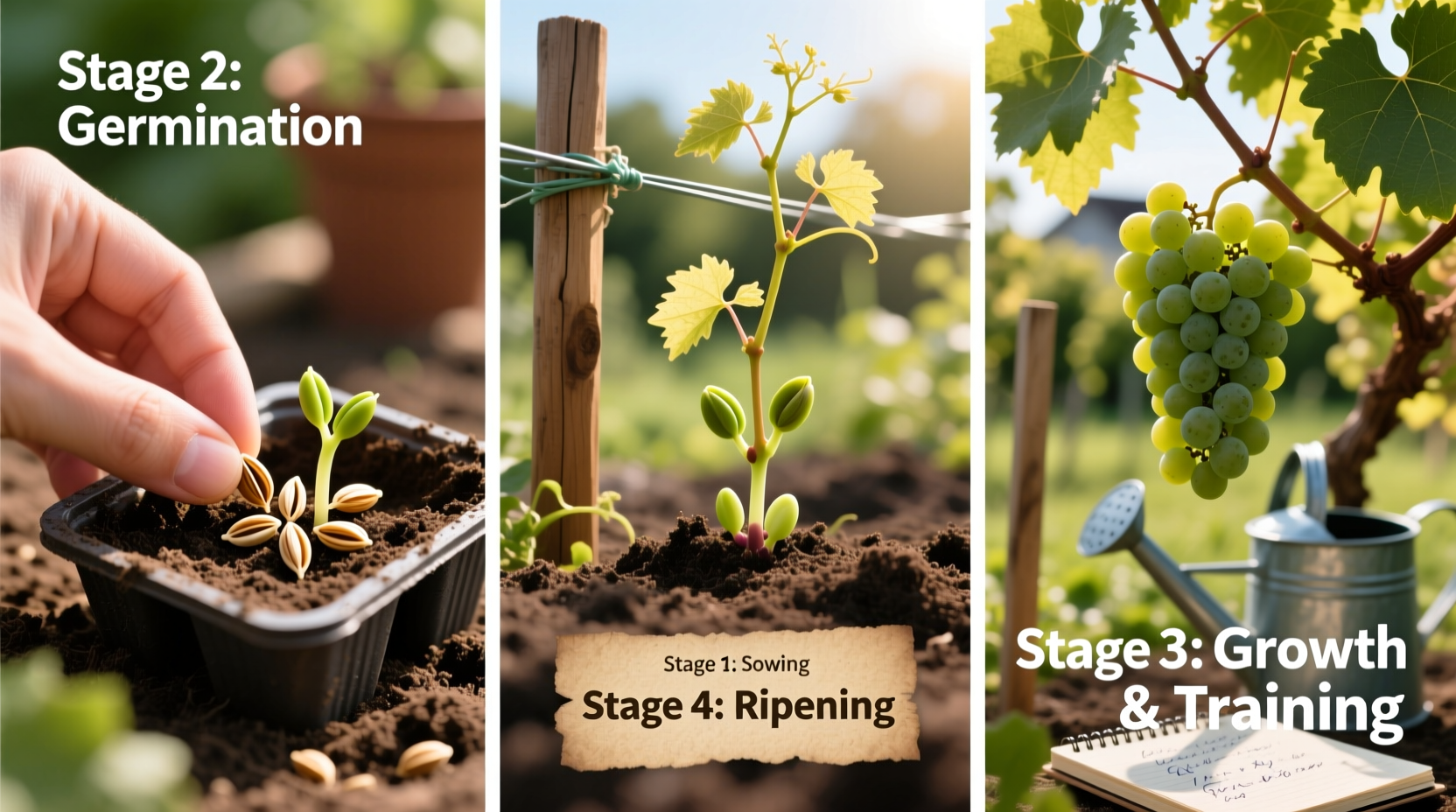Many gardeners wonder if they can grow grapevines from the seeds inside store-bought grapes. While possible, this process demands patience and specific techniques that differ significantly from growing from cuttings. Unlike cuttings which produce clones of the parent plant, seeds create genetically unique vines with unpredictable fruit characteristics - making this method ideal for breeding new varieties rather than replicating your favorite table grape.
Understanding Grape Seeds and Realistic Expectations
Before starting your seed-growing journey, understand these critical facts from USDA Agricultural Research Service studies:
| Factor | Seed Propagation | Cutting Propagation |
|---|---|---|
| Genetic Result | Unique variety (50% chance of inferior fruit) | Exact clone of parent plant |
| Time to Fruit | 3-5 years | 2-3 years |
| Germination Rate | 30-50% with proper stratification | 70-90% success rate |
| Best For | Breeding, rootstock, educational projects | Replicating specific varieties |
Commercial growers rarely use seeds because of this genetic variability. However, University of California Cooperative Extension notes that seed-grown vines often develop stronger root systems, making them valuable as rootstock for grafting desirable varieties.
Preparing Grape Seeds: The Critical First Step
Raw grape seeds won't germinate without cold stratification - a process mimicking winter conditions. Here's how to prepare them properly:
- Seed extraction: Remove seeds from ripe grapes, rinse thoroughly to remove pulp (which contains germination inhibitors)
- Moist storage: Place seeds in damp paper towel inside sealed plastic bag
- Cold treatment: Refrigerate at 34-40°F (1-4°C) for 90-120 days - University of Minnesota Extension research shows 120 days yields highest germination rates
- Monitoring: Check weekly for mold; rinse seeds if needed
This cold period breaks dormancy by triggering biochemical changes. Skipping stratification results in near-zero germination rates according to Oregon State University's horticulture department.
Planting Your Stratified Grape Seeds
After completing cold treatment, follow these planting steps for best results:
- Soil mix: Use well-draining potting mix with 30% perlite
- Containers: 4-inch pots with drainage holes (seedlings hate waterlogged roots)
- Planting depth: Bury seeds 1/2 inch deep - deeper planting reduces germination success
- Watering: Keep consistently moist but not soggy (like a damp sponge)
- Temperature: Maintain 70-75°F (21-24°C) for optimal germination
Within 2-8 weeks, you'll see sprouts emerging. The Penn State Extension notes that germination timing varies significantly by grape variety, with Concord seeds typically sprouting faster than vinifera types.

Caring for Young Grape Seedlings
Once sprouted, your seedlings need specific care during their first growing season:
Light Requirements
Provide 14-16 hours of bright light daily. A south-facing window works, but supplemental grow lights prevent leggy growth. Rotate pots regularly for even development.
Watering Schedule
Water when top inch of soil feels dry. Overwatering causes damping-off disease - a leading cause of seedling death. Morning watering helps prevent fungal issues.
Fertilization Strategy
Wait until second set of true leaves appears before feeding. Use half-strength balanced liquid fertilizer (10-10-10) every 2-3 weeks. Excessive nitrogen burns delicate roots.
Transplanting and Long-Term Vine Development
When seedlings reach 6-8 inches tall with several sets of leaves, they're ready for transplanting:
Outdoor Transition Process
- Hardening off: Gradually expose to outdoor conditions over 7-10 days
- Planting site: Choose full sun location with well-drained soil (pH 5.5-6.5)
- Support system: Install trellis immediately - young vines need early guidance
- Spacing: Plant 6-8 feet apart for adequate air circulation
During the first year, focus on establishing strong roots rather than fruit production. The University of Wisconsin Extension recommends removing all flower clusters in year one to direct energy toward vine development.
Pruning Fundamentals
First-year pruning differs from mature vines:
- After planting, cut back to 2-3 healthy buds
- During growing season, select 1-2 strongest shoots
- Remove all other growth to concentrate energy
- Winter pruning: Cut back to 3-4 buds on selected canes
Troubleshooting Common Issues
Why Seeds Won't Germinate
If your stratified seeds fail to sprout, consider these common causes:
- Insufficient cold period (less than 90 days)
- Temperature fluctuations during stratification
- Planting too deep (over 1 inch)
- Using seeds from grocery store grapes (often treated or from triploid varieties)
Weak Seedling Recovery
Leggy, pale seedlings indicate light deficiency. Move to brighter location immediately and consider supplemental lighting. Gently bury the stem up to first set of leaves to encourage additional root growth along the stem.
Pest and Disease Prevention
Young vines are vulnerable to:
- Aphids: Spray with insecticidal soap
- Powdery mildew: Apply preventative sulfur spray
- Root rot: Ensure proper drainage; avoid overwatering
Remember that seed-grown vines take patience. The Oregon State University Vineyard Program tracks that most seedlings produce their first fruit in year three, with full production typically reached by year five.
When to Choose Seeds Over Cuttings
While cuttings are faster for replicating specific varieties, seed propagation has distinct advantages:
- Breeding potential: Create new varieties with unique flavors or disease resistance
- Rootstock development: Grow vigorous root systems for grafting premium varieties
- Educational value: Perfect for school projects demonstrating plant life cycles
- Cold hardiness: Some seedlings develop better cold tolerance than grafted vines
For home gardeners wanting specific table or wine grapes, cuttings remain the preferred method. But for those interested in plant breeding or creating custom rootstock, seed propagation offers exciting possibilities despite the longer timeline.











 浙公网安备
33010002000092号
浙公网安备
33010002000092号 浙B2-20120091-4
浙B2-20120091-4